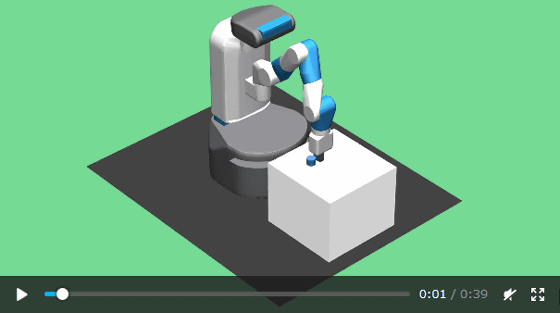Machine learning of concepts in computer using 'energy function'

To improve the efficiency of machine learning, a learning model that can identify and generate instances of concepts such as "near", "above", "between", "nearest", and "furthest" with respect to points existing on two dimensions using an energy function Research results of " Energy-Based Model " was announced. Using this model, it is said that machine learning is performed by performing only five demonstrations, and the results can be applied not only to 2-dimensional but also 3-dimensional.
[1811.02486] Concept Learning with Energy-Based Models
https://arxiv.org/abs/1811.02486
Learning Concepts with Energy Functions
https://blog.openai.com/learning-concepts-with-energy-functions/
Ability to integrate experience into concept is indispensable for human's excellent ability such as ability to find general type from limited experience, abstract reasoning and planning, analogical reasoning, creative problem solving, language ability, etc. is. Igor Mordatch , Google researcher at OpenAI, developed a technology that allows agents to learn from a given task and extract concepts and use that concept in different domains.
An example of that is application in a robot as follows. We learn instances developed in two-dimensional space, and say that it is possible to apply concepts obtained from them to 3-dimensional space. (Click to play the video)

It is based on that it is "energy function". In this work, you can learn to use agents to categorize and generate simple concepts using energy functions, and solve tasks such as navigating between two points in different environments. Examples of concepts are " visual " ("red" "square"), " space " ("inside" "top"), " time " ("slow" "after"), " social " It is said that these concepts learned once, such as "aggressive" "beneficial") function as a "block" which is the basis for understanding and inferring agents.

The energy function is estimated from the point arrangement (middle) given as a demonstration from the point arrangement (left), and a new point is generated based on the energy using the stochastic gradient descent method (right) ).

With this technique learning by computer systems it is possible to classify and generate a specific set of spatial relationships or to navigate entities through a scene in a specific way or to " three, that the now allow the determination of concepts such as the amount, such as three or more. " (Click to play the video)

About future prospects Mr. Mordatch is considering integration of agent decision making policy and concept by utilizing a wide range of concepts learned in a richer three-dimensional environment. After that, he wants to link to the research on the relationship existing between "concept" and "language understanding".
Related Posts:







